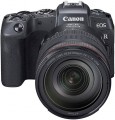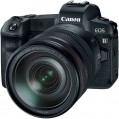DxOMark rating
The result shown by the camera in the DxOMark ranking.
DxOMark is one of the most popular and respected resources for expert camera testing. According to the test results, the camera receives a certain number of points; The more points, the higher the final score.
Total MP
The total number of individual light sensitive dots (pixels) provided in the camera's sensor. Denoted in megapixels - millions of pixels.
The total number of MPs, as a rule, is greater than the number of megapixels from which the frame is directly built (for more details, see "Effective number of MPs"). This is due to the presence of service areas on the matrix. In general, this parameter is more of a reference than practically significant: a larger total number of MPs with the same size and effective resolution means a slightly smaller size of each pixel, and, accordingly, an increased likelihood of noise (especially at high ISO values).
Effective MP number
The number of pixels (megapixels) of the matrix directly involved in the construction of the image, in fact — the number of points from which the captured image is built. Some manufacturers, in addition to this parameter, also indicate the total number of MPs, taking into account the service areas of the matrix. However, it is the effective number of MPs that is considered the main indicator — it is this that directly affects the maximum resolution of the resulting image (see “Maximum image size”).
A megapixel is 1 million pixels. Numerous megapixels ensures high resolution of the captured photos, but is not a guarantee of high-quality images — much also depends on the size of the sensor, its light sensitivity (see the relevant glossary items), as well as hardware and software image processing tools used in the camera. Note that for small matrices, high resolution can sometimes be more of an evil than a blessing — such sensors are very prone to the appearance of noise in the image.
Maximum image size
The maximum size of photos taken by the camera in normal (non-panoramic) mode. In fact, this paragraph indicates the highest resolution of photography — in pixels vertically and horizontally, for example, 3000x4000. This indicator directly depends on the resolution of the matrix: the number of dots in the image cannot exceed the effective number of megapixels (see above). For example, for the same 3000x4000, the matrix must have an effective resolution of at least 3000*4000 = 12 million dots, that is, 12 MP.
Theoretically, the larger the size of the photo, the more detailed the image, the more small details can be conveyed on it. At the same time, the overall image quality (including the visibility of fine details) depends not only on resolution, but also on a number of other technical and software factors; see "Effective MP number" for more details.
Ultra HD (4K)
The maximum resolution and frame rate of video captured by the camera in
the Ultra HD (4K) standard.
UHD 4K refers to resolutions with a frame size of approximately 4,000 horizontal pixels. Specifically, in cameras for video shooting, resolutions of 3840x2160 and 4096x2160 are most often used. Regarding the frame rate, it is worth noting first of all that a normal (not slow-motion) video is shot at a speed of up to 60 fps, and in this case, the higher the frame rate, the smoother the video will be, the less jerks will be noticeable when moving in the frame. If the frame rate is 100 fps or higher, this usually means that the camera has a slow-motion video mode.
Focus points
The number of focus points (autofocus) provided in the design of the camera.
The focus point is the point (more precisely, a small area) in the frame from which the autofocus system reads data for focusing. The simplest systems work with a single point, but their capabilities are very limited, and this option is practically not found today. Modern digital cameras have at least three focus sensors, and in the most advanced models this figure can reach several dozen.
The more autofocus sensors there are in the camera, the more advanced its autofocus capabilities will be, the more specific techniques it allows you to use. In this case, the selection of specific points used can be carried out both automatically, simultaneously with the choice of the subject program, and manually (however, the second option is more typical for professional cameras). In addition, the abundance of focus points has a positive effect on the quality of the tracking autofocus (see "Autofocus Modes").
In general, more focus sensors are generally considered a sign of a more advanced camera; however, differences in quality become really noticeable only if the difference in the number of points is significant - for example, if we compare models with 9 and 39 points. A lot also depends on the location of the points in the frame - it is believed that sensors distributed over a wide area work better than densely located in the center of the frame, even if their number is the same.
Viewfinder crop
This setting can be simplistically described as the amount of magnification provided by the viewfinder relative to how the image appears to the naked eye. The features of modern viewfinders are such that most of them have crop values less than 1 — that is, it somewhat reduces the visible “picture”.
In general, the larger this parameter, the larger the objects look in the viewfinder and the easier it is to focus through it.
Shutter speed
The range of shutter speeds that the camera is capable of shooting.
Exposure is the time between opening and closing the shutter (see below), in other words, the period of time captured in the photo. For different purposes, methods and conditions of shooting, different shutter speeds will be optimal. Small values (in modern cameras they can reach thousandths of a second) are important when shooting fast-moving objects and for shooting at long distances — in the first case, they minimize the effect of image blur from the movement of the object, in the second — the effect of camera shake in hands. However, for shooting at low shutter speeds, a good matrix light sensitivity or high-aperture optics are required (see above). Long shutter speeds (measured in seconds) are used for shooting in low light conditions — such as city streets at night or the starry sky — and also allow you to create the effect of movement in the frame. Accordingly, the greater the shutter speed range, the wider the camera's ability to choose the option that is optimal for certain conditions.
Continuous shooting
Continuous shooting speed provided by the camera at the maximum frame resolution. At lower resolutions, the speed may be higher, but this value is considered the key characteristic.
In continuous shooting, the photographer presses the button, and the camera takes several shots in a row, usually at intervals of a fraction of a second. Such shooting is convenient, for example, for capturing fast-moving objects: it allows you to choose the most successful from a series of frames, or to show the dynamics of movement using the entire series. And the higher the speed, the more effective the shooting, the more frames the camera can capture in a period of time. On the other hand, speed requires appropriate hardware and can significantly affect the cost.

